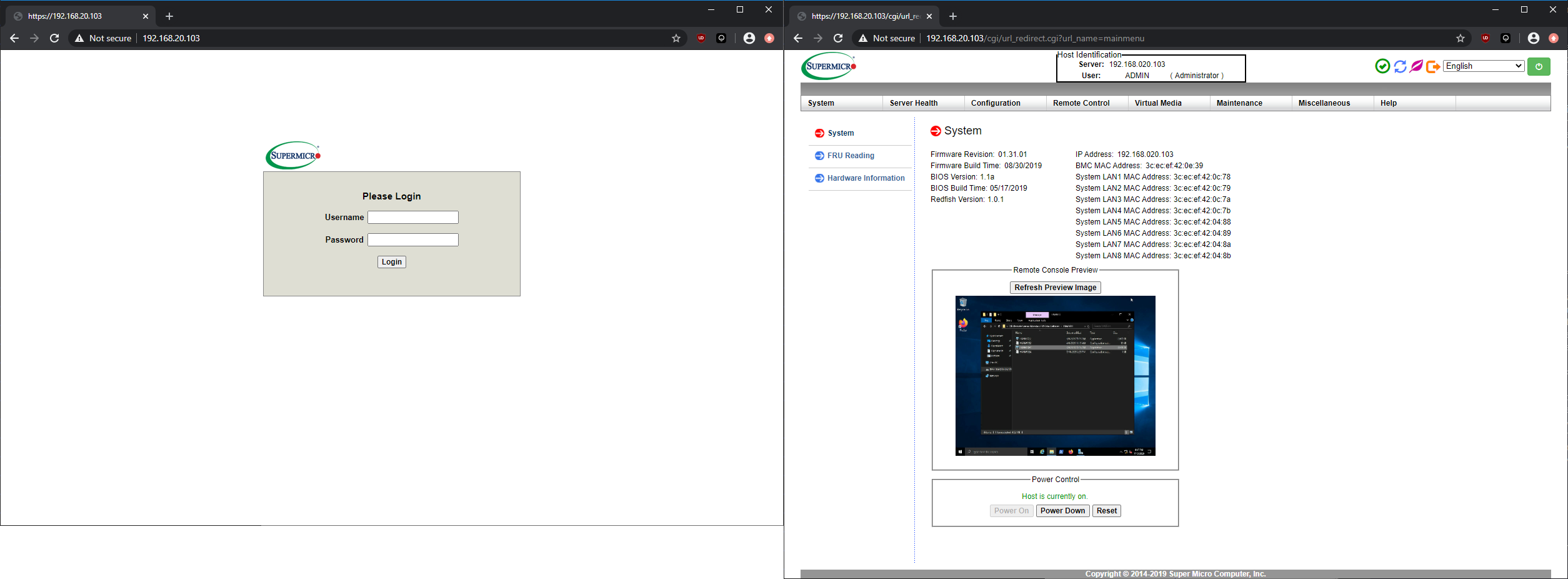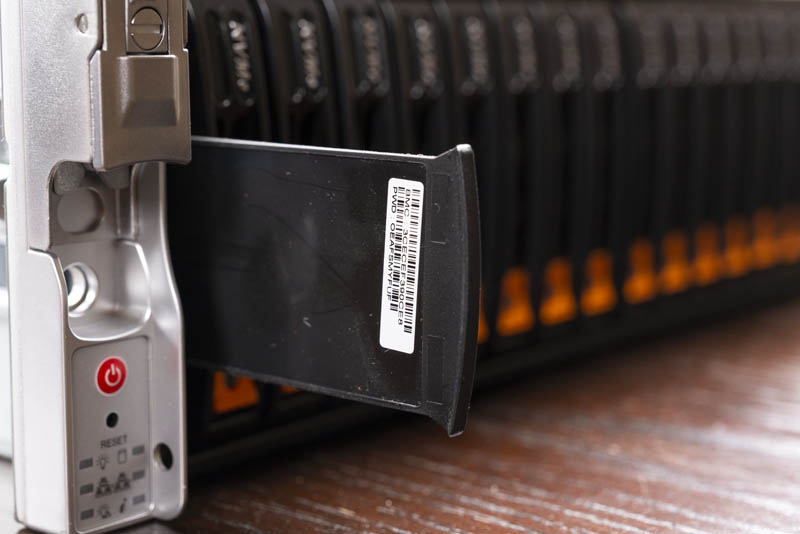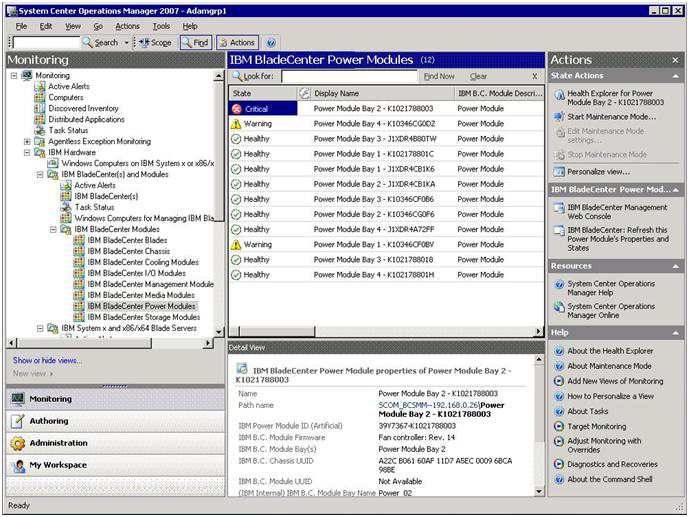2020. 10. 29. 03:49ㆍ카테고리 없음
Download the 64-bit ipmiutil package from the IPMI Management Utilities website and install it.; Set your laptop IP to 169.254.3.1/24 where FSP IP address is 169.254.3.x. You can use nmap or some other tool to obtain this address. Out of manufacturing, the dynamic IP should be effective. Also, you can use FSP interface #2 over the 169.x.x.x address. The SMCIPMITool is an out-of-band Supermicro utility that allows a user to interface with SuperBlade® systems and IPMI devices via CLI (Command Line Interface). This is only for people who has a dedicated server with Supermicro Motherboard and IPMI feature, to reset the admin password. SuperMicro IPMI License Generator. This is a helpful tool, It can generate the SuperMicro's motherboard IPMI Activate License keys, And it is free and open-source. First, input your IPMI BMC-MAC here: Generate. Then, click the Generate button, your will get the license key.
Although ESXi does allow for limited hardware reporting from via IPMI, you may find yourself in a situation where you need to interact with your BMC. A tool that I’ve been using for some time for this purpose is ipmitool, which can be obtained for just about any Linux distribution. The ipmitool utility can be used to pull fan and sensor data, change the BMC network configuration and can even be executed against an IPMI compliant BMC remotely over the network.


Normally, you can just use the web-based IPMI user interface to do a lot of what ipmitool can do, but there are situations where this won’t cut it. A couple of examples would be locking yourself out of the BMC by setting an incorrect VLAN tag or having to modify a setting that isn’t exposed in the UI. My motivation for getting ipmitool running within the ESXi shell was the latter. I needed to be able to modify fan thresholds to keep my slow-spinning fans from triggering critical alarms on my hosts. These fan thresholds aren’t exposed in the web UI and I have to modify them using ipmitool. Normally, to do this I’d have to shut down the host, and boot it up using an install of Debian on a USB stick – a bit of a pain. Why not just run ipmitool from directly within ESXi instead?
A Bit of Background
I first came across this post, which pointed me in the right direction. I couldn’t find a copy of the correct binary, so I just went ahead and compiled a build of ipmitool from source to get a 32-bit Linux executable. Unfortunately, the newest version of ipmitool that ESXi seems to satisfy the library dependencies for is a relatively old 1.8.11 from almost ten years ago. I tried compiling versions 1.8.18 and 1.8.12, but neither would run in ESXi 6.7 U2. Thankfully, 1.8.11 still seems to work fine for most systems and provides the basic functionality required.
Once I had a functional executable, I was able to package it using the really handy ESXi Community Packaging Tools at v-front.de.
File Download

You can download the files here:
Within the zip file, you’ll find the following:
MD5 checksums:
Installing the VIB
To make installation and removal easier, I packaged up the ipmitool executable as a VIB as well as an offline bundle. To install the VIB, use the following steps:
- If you haven’t already done so, you’ll need to set your software acceptance level to ‘CommunitySupported’. This can be accomplished by running the following command:
- Next, copy ipmitool-1.8.11-2.x86_64.vib to the ESXi host. To do this you can SCP file file over using WinSCP or the scp command in Linux. The /tmp location is recommended for this purpose. Don’t forget to enable SSH on the ESXi host or you won’t be able to scp the file over. Alternatively, you can copy the file to a shared datastore that the host has access to using the datastore browser.
- Install ipmitool using the esxcli software vib install -v /tmp/ipmitool-1.8.11-2.x86_64.vib –no-sig-check command:
Note: If the install fails, try to add the –no-sig-check option to bypass the file signature check. It’s not necessary to reboot the host after installation.
- If ipmitool installed successfully, you can run the ipmitool command from the /opt/ipmitool/ directory. If you get the help output returned, it was successful:
- You can validate the VIB was installed by running the following command:
The executable will be installed to the /opt/ipmitool/ location on the ESXi host:
Also included in the download is an offline bundle .zip file. This file can be used for including the VIB in custom ISOs or for uploading multiple hosts via Update Manager. It is not necessary for installing on an individual host.
Removing ipmitool

Removing ipmitool is simple. Use the esxcli software vib remove command as listed below:
A host reboot is not required. You can validate that it was removed successfully if the executable is gone:
Ipmi Tools For Mac Os

Using ipmitool
I won’t get too much into using ipmitool as it’s well documented, but a few examples you include the following:
Get an output of all sensor readings:
Get detailed information for a specific sensor:
Set all “FAN 1” alarm thresholds to 750RPM:
Get IPMI LAN configuration:
Change the BMC’s VLAN ID:
Updates
1.8.11-2 – August 20, 2019: If you downloaded the older version that I had originally posted (1.8.11-1) please remove it and install the 1.8.11-2 version posted above instead. I had used /bin/ to store the executable in the older version. Although it worked fine, this causes a lot of unnecessary log messages from VisorFS in vmkernel.log similar to the following:
Ipmi Tools For Mac Installer
The executable is now stored in /opt/ipmitool/ instead, which means this won’t happen. As an added bonus, the –no-sig-check option is no longer required while installing.
Ipmi Tools For Mac Windows 10
1.8.11-1 – August 19, 2019: Original release version.
